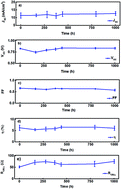Abstract
One major challenge of functional material fabrication is combining flexibility, strength, and toughness. In several biological and artificial systems, these desired mechanical properties are achieved by hierarchical architectures and various forms of anisotropy, as found in bones and nacre. Here, it is reported that crystals of N-capped diphenylalanine, one of the most studied self-assembling systems in nanotechnology, exhibit well-ordered packing and diffraction of sub-Å resolution, yet display an exceptionally flexible nature. To explore this flexibility, the mechanical properties of individual crystals are evaluated, assisted by density functional theory calculations. High-resolution scanning electron microscopy reveals that the crystals are composed of layered self-assembled structures. The observed combination of strength, toughness, and flexibility can therefore be explained in terms of weak interactions between rigid layers. These crystals represent a novel class of self-assembled layered materials, which can be utilized for various technological applications, where a combination of usually contradictory mechanical properties is desired.

Crystals of N-capped diphenylalanine, a well-studied self-assembling archetype, exhibit well-ordered packing and diffraction of sub-Ångstrom resolution, yet display remarkable flexibility. The mechanical properties of individual crystals are evaluated using bending and tensile assays, assisted by density functional theory calculations. High-resolution electron microscopy reveals that the crystals are composed of self-assembled layers, a key property of many materials with exceptional mechanical properties.
